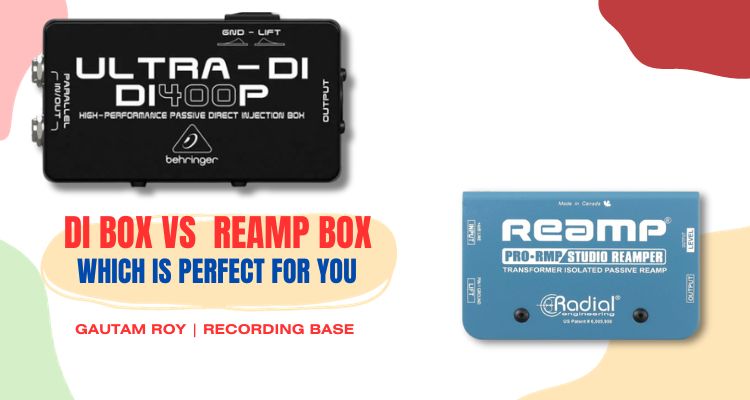Making a list of the top 10 best condenser microphones under $200 is really hard work.
There are many good condenser microphones are available out there and choosing the best ones is a tricky task for sure. I had to serve the list by deep analysis of some major factors which affect the quality of a mic.
I know that choosing the best from a saturated market of mics was going to be a difficult task for me but finally I have ended up with this ultimate list of 10 best condenser microphones under $200.
Table of Contents
- 1 6 Quality Factors for Vocal Condenser Mic
- 2 10 best Condenser Microphones under 200 buck
- 3 Audio-Technica AT2035 Cardioid Vocal Condenser Mic
- 4 MXL 990 Cardioid Vocal Mic
- 5 AKG P220 Large Diaphragm Condenser Mic
- 6 MXL V67G Capsule Condenser Mic
- 7 Shure SM86 LC Cardioid Condenser Vocal Mic
- 8 Blue Yeti USB Condenser Mic
- 9 AKG Perception 420 Condenser Microphone For Vocal
- 10 Rode NT-USB Condenser Microphone
- 11 Blue Spark SL Large Diaphragm Vocal Mic
- 12 Shure MV88 Digital Stereo Field Recording Condenser Mic
- 13 Conclusion
6 Quality Factors for Vocal Condenser Mic
Sensitivity Vs Noise
Condenser mics are very sensitive to sound. Powered by 48V phantom power or internal battery, they can catch the subtle part of the audio.
This is the reason for using these mics in recording studios. Suppose when you are trying to capture a fairly quiet instrument, do you want to increase your Preamp level to full and add a fair amount of noise in your record?
The quality of a condenser mic depends most on the sensitivity of the diaphragm.
Although the more sensitivity would be a headache if your recording rooms are not fairly soundproof as you might face loops-effect on the monitors.
Polar Pattern
Polar Patterns are the 2nd thing that you should consider before buying a condenser mic.
Disclosure: This post may contain affiliate links, which means we may receive a commission if you click a link and purchase something that we recommended. Read more about Affiliate disclosure here.
There are 4 main polar patterns found in condenser microphones – Omnidirectional, Cardioid, Hypercardioid, and Bidirectional.
All these patterns are used for different purposes. The choice of patterns depends on the type of instruments or vocals you want to record?
Well, some high-range condenser mics have all 4 patterns.
In these mics, you have been provided buttons to change the pattern.
But here we are discussing the mics below $200. In this range, the mics have generally 1 or 2 types of patterns. So be careful with your choice of patterns.
Frequency response
Frequency response is also a very important point to choosing the best condenser mic.
Suppose you want to capture a mandolin which generally sounds at upper-midrange.
So you should consider a condenser microphone with some upper -mid-frequency boost. For vocals, you can use fairly flat frequency mics as vocals play all over the frequency range.
You should also pay attention to the frequency range.
If you want to record high-frequency sounds then you should choose a wide high-frequency range mic and if you want to capture the kick-drum and acoustic bass guitar then you should consider more low-frequency range mics.
For more about drum mics refer to my guide,
Diaphragm size
Diaphragm size is directly related to the sensitiveness of a condenser mic.
If your mic’s diaphragm size is big then it will capture more sound and hence be more sensitive to the sound source. But a small diaphragm mic cannot capture a fair amount of sound and it’s less sensitive than big ones.
Large-diaphragm mics tend to have varying frequency responses with the placement. But the small diaphragm mic’s frequency response becomes intact in a different placement.
Proximity Effect
The proximity effect is an effect that enhances bass frequency when the object comes closer to the mic. Depending on the quality this effect may be high or low in different condenser mics.
If you want to capture vocals then you should choose a mic with a high proximity effect, otherwise, you can go for a normal mic.
A trained singer uses this effect to enhance his singing quality so you should always consider this before buying condenser microphones.
Durability
We can divide the durability into 2 parts – Material toughness and mechanical toughness. Generally, due to the sensitiveness of these mics, they are not more fragile than dynamic mics.
If you dropped then the diaphragm could be damaged in no time.
There are some stage performance condenser mics available though, which are more strong than studio condenser mics.
It’s an electronic device and uses 48V phantom power. It has many sensitive components which could damage if the power supply is not steady.
For more about choosing the best microphones, you can also refer to my guide,
10 best Condenser Microphones under 200 buck
As I have told you at the very first of this article, finding the best Condenser microphones under $200 was a tough job for me.
I had compared more than 200 microphones according to the above 6 factors and then came with these gems.
In this list, you will find vocal condenser mics, instrument condenser mics as well as outdoor session recording mics. All the mics on this list possess some different advantages.
I will describe all the Pros and Cons of all 10 condenser microphones.
Well, now you know, on which factors we’ll compare all these microphones.
Let’s jump into the list…
Audio-Technica AT2035 Cardioid Vocal Condenser Mic
Audio-Technica is a well-known name in pro audio headphones and microphone manufacturing.
Well, they have a wide range of headphones and microphones, but I’m here today with a Cardioid Condenser Microphone by Audio-Technica ie; AT2035.
As I have discussed above, there are 6 main factors that decide the quality of a Condenser microphone, let’s compare this condenser mic with all those 6 factors.
Sensitivity Vs Noise
It can record sound down to -33dB which is an awesome specification of this mic. You can also use it to record fairly quiet instruments. Due to the high sensitivity, the noise ratio is very low.
It is a good condenser mic for critical studio recording like vocals, melody instruments, etc.
The additional advantage of this condenser mic is you can also record high-volume musical instruments like drums etc without damaging the diaphragm.
Its made to handle high Sound pressure levels (SPL).
This condenser mic can handle up to 158 dB SPL. As well as you get a wide dynamic range to record each and every detail of vocals and instruments.
Polar Pattern
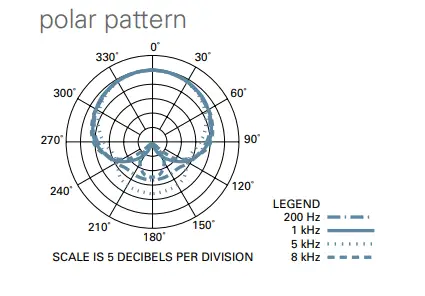
It has only one polar pattern ie; the Cardioid polar pattern. However, a cardioid pattern is sufficient to record audio from the front side of the mic and it is actually helpful as it reduces the pickup of sounds from the sides and rear.
But it’s not perfect for group recordings like chorus and harmony etc.
It’s not a multipurpose condenser mic but is ideal for recording solo instruments and vocals.
Cardioid pattern reduces the background sounds so you can use it in a semi-soundproof room too.
Frequency response
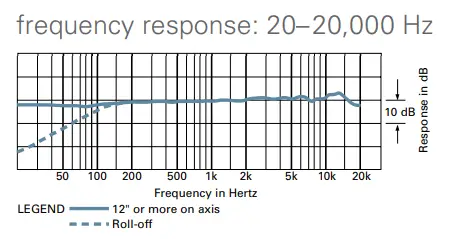
Frequency response and frequency curve are one of the most important terms in audio engineering. These 2 factors decide the overall quality of the equipment.
Human ears are capable to hear between 20Hz-20kHz.
We expect our audio equipment to be sensitive to this frequency range. After all, the audio we create is for humans.
Audio-Technica AT 2035 is capable to input from 20Hz to 20kHz. It has a switchable 80 Hz high-pass filter also for cutoff some bass from the audio.
This filter is helpful for recording melody instruments and female vocals. When we record this type of audio in a condenser mic, background noise in the form of a hum is also recorded.
This 80Hz high pass filter helps to reduce this hum.
If we talk about the frequency curve, you can see from the graph above that it’s totally flat up to 10kHz. After 10kHz it starts decreasing which means it is slightly weak in capturing high-frequency sound.
So, I recommend you to use it for vocals, low and mid-range instruments, etc. It performs well with vocals and mid-range instruments. But not built for hi-range instruments.
Diaphragm size
Audio Technica AT – 2035 is a large-diaphragm condenser microphone which makes it a highly sensitive condenser mic in its price range.
The large-diaphragm reduces the noise and increases the signal input sensitivity. As a result, you get a smooth and natural low noise sound.
Proximity Effect
You can consider it as a budget vocal mic as the proximity effect is not as much as costly condenser mics like Neumann TLM or AKG Pro Audio C414 XLII. Within $200 you can’t expect more than this.
But you can use it as a regular vocal mic, instrument mic, etc. It’s a widely used condenser mic for podcasting.
Durability
AT-2035 is covered with a metal link which makes it more durable than other un-covered condenser mics. You also get a custom shock mount that provides superior isolation as well as durability.
Just like other costly mics, the large diaphragm is a headache as if you accidentally drop this mic, probably the diaphragm could break. If we talk about the internal parts, they are very durable and last long for years if you use the mic correctly.
Keep in mind, Voltage fluctuation is a silent enemy of condenser mics.
Pros
- Neutral and balanced sound
- Ideal for wide range of applications
- Many useful accessories included
- Highly durable built quality
- Handles high SPL level
- High sensitivity – natural sound with low noise
- Provided high pass filter and 10dB pad is very helpful when record different types of instruments
Cons
- Not ideal for high-frequency sounds recordings
- filter and pad switches are hard and take time to loosen
- Sibilance is high as compared to other same range mics
- Accessories are not good quality
- Only one polar pattern (Cardioid)
MXL 990 Cardioid Vocal Mic
MXL 990 is my best mic in the $200 price range. It is a perfect mic for digital as well as analog recordings. It has a silky, sweet high end and a tight solid bass which makes it a perfect mic for recording vocals.
You can also use it to record drum overheads, acoustic guitars, and many more instruments.
Let’s measure its quality on our 6-factor quality check.
Sensitivity Vs Noise
MXL 990 is sensitive up to 15mV/Pa which is an awesome amount to record quiet instruments. As well as the noise level is very low. You get a signal-to-noise ratio of 80 dB in MXL 990.
This means you can record a natural sound without adding much noise to it.
Polar Pattern
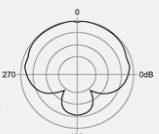
As expected with a budget condenser microphone, it is also equipped with the only cardioid polar pattern.
You can’t use it to record multiple instruments or side-by-side recordings as it doesn’t have super-cardioid or bi-directional. But for an optimized single instrument or vocal recording it’s a perfect choice.
Frequency response
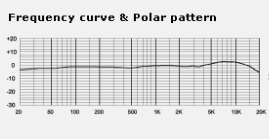
MXL 990 is capable to record between 30Hz to 20kHz. Although you get low frequency sounds down to only 30Hz it can be negligible. It is fairly sensitive to bass frequencies.
As well as you get a smooth and flat frequency graph up to 5kHz.
MXL 990 has a slightly high input between 5kHz to 10kHz.
This makes it a good micing option for higher midrange instruments like drum heads, guitar, etc. Also, it performs better with female vocals.
The only downside is that it doesn’t have any high pass filter, which means if you record a high-frequency sound you also get a slight low-frequency hum. However, you can reduce that with a noise gate.
The High-mid boost in the frequency response of this mic is also helpful to reduce the low-frequency hum.
Diaphragm size
MXL 990 features a 6-micron gold-sputtered large-diaphragm which makes it fairly sensitive up to 15mV/Pa as well as captures the volume up to 130dB.
With the gold-sputtered diaphragms, MXL 990 creates professional and natural sound and provides you with the perfect tracks to mix. As well as you get great isolation.
Proximity Effect
It does not produce a good proximity effect so your vocalist could face some problems to make his voice more sounding. But with a $200 mic, you can’t expect a pro condenser mics.
Although, you can record general vocals like speeches, as well as a wide variety of instruments too.
Durability
MXL has a Champagne finish which is very sensitive to scratches so you have to take extra care of it. Although you get a shock resistive mic stand with the package so in-between sessions it’s a durable mic.
Keep in mind if it’s dropped you could damage the diaphragm so always use it carefully and place it in case after use. As inner components are very sensitive to current the voltage fluctuations also harm them.
Make sure to use it in a steady voltage environment.
Pros
- High sensitivity makes it possible to record accurate sound with low noise
- High SPL level up to 157dB
- Gold plated Large diaphragm
- All accessories included
- Ideal for vocals and midrange instruments
Cons
- Only cardioid polar pattern
- No high pass filter
- Not durable enough
- Higher mid boost (actually it’s not exactly a disadvantage. It can be an added benefit if used correctly)
AKG P220 Large Diaphragm Condenser Mic
AKG P220 is another great large-diaphragm condenser microphone in 200 dollars price range. The design of this mic is exactly the same as Audio – Technica AT2035.
If we put 2 mics together nobody can differentiate between them except the logo.
Anyways, we have to examine this condenser mic in our 6 quality factors so that we could know if the qualities are also the same or not.
Sensitivity Vs Noise
The sensitivity is up to 20 mV/Pa which is quite high than MXL 990. You can record more subtle sounds with this condenser microphone.
The signal to noise ratio is 78 dB means up to 78 dB you don’t get any noise. Although the signal-to-noise ratio of this mic is slightly low than MXL 990 it’s more than AT2035.
As well as AKG P220 can handle up to 155 dB SPL so you can easily record drums and other loud instruments as well as loud vocals.
The combination of high sensitivity and SPL gives it a great dynamic range so that you could record a smooth and natural sound with each and every detail.
Polar Pattern
Like other same range condenser microphones, it has also only one polar pattern which is the most used, “Cardioid pattern”. You can use it for solo recordings but not multiple instruments in the same mic.
The cardioid pattern is sufficient for common applications so don’t worry about the pattern much.
Frequency response
The frequency response of AKG P220 condenser microphone is 20Hz-2kHz. Its normal frequency range of an ideal condenser mic.
But the noticeable thing is that we get a slight boost around 50hZ as seen in the frequency graph. The green line shows that if you apply the low cut filter then you can cut down the boost totally.
So you can use this mic for multiple applications like drums etc without a low cut filter and mid-range instruments with the low cut filter.
The only demerit which I see in the graph is that after 10kHZ the frequency response is a decreasing slope. So for Hi-hat etc, this mic is not great but vocals can be a perfect choice.
Diaphragm size
Its big size diaphragm makes it more sensitive against the audio. It’s a great mic for vocals, pianos, and woodwind items. The 20 dB pad switch and low-frequency cut switch make it possible to record percussions and other high SPL instruments.
Proximity Effect
Now come to the proximity effect. As you can see in the graph this mic is more sensitive to bass frequencies so it has a good proximity effect and is ideal for a singer who uses this effect to add color to their voice.
Durability
Just like Audio Technica AT 2035, AKG P220 is very durable. It is made of a rugged all-metal body and robust design which makes it for tough day-to-day use.
The internal components are also durable as they are built with quality materials and tested in many quality checks.
But at last, it’s a condenser mic with a very sensitive diaphragm and other fragile components so dropping or operating in voltage fluctuations could create big damage.
Pros
- Detailed, warm and good tonal balance
- Ideal for Pianos, Vocals, Guitar etc
- Highly sensitive and quieter than other cheap mics
- Very durable built quality
- Records natural and accurate sound
- Comes with shock mount and pop filter
Cons
- Metal finish is not scratch resistant
- Slops down after 10 kHz not very sensitive to upper high frequency
- Due to isolation may stop working suddenly
- Only one polar pattern (Cardioid)
MXL V67G Capsule Condenser Mic
MXL V67G is a pressure gradient capsule condenser microphone like AKG P220 and Audio-Technica AT2035. It has a solid-state preamp balanced transformer output which makes it more precise to the sound sensitivity.
MXL V67G features a class A FET design for warm vocals as well as provides a rich midrange. It is considered as one of the best vocal mics under $200.
Let’s have a look at the quality of this microphone with our 6 quality check standards.
Sensitivity Vs Noise
It has a sensitivity level of 15 mV/Pa which is the same as MXL’s other modal we discussed earlier MXL 990. Its large diaphragm makes it more sensitive to the signal and lows down the noise to the minimum -20dB.
With this sensitivity level, you can record each and every subtle detail of the sound.
It can handle the SPL up to 130dB which is also the same as MXL 990 but it doesn’t beat AKG P220 and Audio Technica AT2035.
Although the combination of the sensitivity and SPL make it a good mic to record low-sounding instruments and vocals and gives us a good dynamic range.
Polar Pattern
It has Cardioid polar pattern, perfect for recording solo instruments while reducing background noise to the minimum. Like other same range condenser mics, it does not have a more than Cardioid pattern.
You have to be stuck with Cardioid operations only.
Frequency response
MXL V67G has also a 30Hz to 20kHz frequency response. But the difference is the graph is flatter than MXL 990 and it’s not boosted in any region.
This frequency graph makes it an Ideal mic for all types of instruments. The only demerit of this mic is it doesn’t have any bass cut so you get a low-frequency hum. However, you can reduce this hum by applying a noise gate on your track.
Diaphragm size
It has a large gold-sputtered, 6-micron density diaphragm which is able to capture a wide frequency and dynamic range.
If you want a professional vocal with a low-range mic then this is the best mic for you.
Proximity Effect
It has not a much proximity effect so your vocalist will have to adjust him with the mic. As he can’t add the bass and treble effect to his voice by changing the position.
Durability
The cover is made with a champagne metal finish which gets scratched easily. Although, the diaphragm cover is protected by a metal link for extra protection.
Inner components are very durable and run for years in normal conditions.
Pros
- Warm and clear sound
- Ideal for vocal and acoustic instruments
- Durable build quality
- Gold-sputtered large Diaphragm
- Nearly flat frequency response
- All accessories included
Cons
- Pickup background noise
- No low cut filter
- Little bright a high frequency above 10kHz
Shure SM86 LC Cardioid Condenser Vocal Mic
Shure is especially known for microphone manufacturing. They are the leading brand in the pro audio field for mics. Shure’s dynamic microphone SM56 and SM57 are legendary microphones.
They are used in both recording purpose and live performance and performs very well.
But here We will discuss Shure condenser microphone SM86 LC. This is a unidirectional Cardioid Condenser microphone and is easily used for live performance without feedback problems.
The unidirectional design reduces the feedback issues. If you are looking for a condenser mic for live performance then this would be the right choice for you.
The cool thing is that it looks like a normal dynamic microphone.
Let’s have a look at the features of the SM86 LC microphone.
Sensitivity Vs Noise
Its sensitivity is -50 dBV/Pa which is a good feature for a condenser microphone. It’s very sensitive to sound signals and catches all the details of the sound source.
With a signal-to-noise ratio of 71 dB, it can reduce the noise effectively. As well as the 124dB dynamic range makes it able to capture the subtle frequencies too.
Polar Pattern
The polar pattern is obviously cardioid. SM86 LC has only one pattern and its obvious for the dynamic style condenser microphone. This is an ideal pattern to capture vocals and melody instruments.
So, you can use this mic in all the studio and live melody operations.
Frequency response
This mic has not had as wide frequency response as above all mics. It’s a little disappointing. It has a frequency response between 50Hz to 18kHz.
The one other thing which makes me disappointed is that even after a condenser mic, its performance is like a dynamic mic. What am I saying you can understand by pointing your eyes at the graph.
You can clearly see that it’s weak at the low end and boosted at the higher end. Obviously, you get a modified sound like dynamic mics with mid boost.
Diaphragm size
As it is a dynamic style condenser microphone, the diaphragm size is not big enough to capture a wide range of frequencies. I think that is the fact that makes its frequency graph, high frequency centric.
Proximity Effect
The proximity effect is very high for this mic. When the singer comes close to 6 mm the bass is boosted about 6dB to 10dB. The singer can use this proximity effect to produce some warmer sounds in his vocals.
Durability
Shure SM86 LC is much more durable in all the microphones listed in this top 10 list. The only reason is its dynamic style build. The dynamic finish makes it more durable than other condenser mics.
If you accidentally drop it, the chance is there would be no harm to the diaphragm.
As well as inner components are also very durable and stand for years without any damage if used in ideal conditions.
Pros
- Ideal For live stage performance
- Can be used for all melody applications
- Low feedback issues
- Durable then other condenser microphones
- Good proximity effect
Cons
- Not ideal for bass instruments
- Weak at the low end and boosted on high frequency
- Small Diaphragm Size
- Looks like a dynamic microphone
Blue Yeti USB Condenser Mic
Blue Yeti is my favorite condenser microphone for podcasting. It is one of the best-selling microphones on Amazon and really performs well on desktop recordings.
It is a USB powered microphone so you can use it without an audio interface. It’s a very great mic for podcasters and Youtu creators.
Let’s have look at the 6-factors of this microphone.
Sensitivity Vs Noise
Blue Yeti mic’s sensitivity is 4.5mV/Pa which is not as much as other $200 range microphones. Although, you get the 100dB signal-to-noise ratio which makes it a noise-free mic.
As well as the SPL up to 120dB is an added benefit when recording high SPL applications.
Polar Pattern
The main advantage of having this mic is getting 4 types of polar patterns. That means you can use it for multiple applications including chorus, and harmony.
It has switchable Cardioid, Stereo, Omnidirectional, and Bidirectional polar patterns. You can use the stereo polar pattern to get a stereo effect in your instruments.
Frequency response
Manufacturers claim that this mic is responsible from 15Hz to 22kHz but in normal conditions, it generally captures the frequency between 20Hz to 20kHz.
The frequency graph is not flat though. You can see a sudden drop at 3kHz. So you could miss some mid-range frequencies in your recording. But the overall performance around the frequency range is good.
Diaphragm size
As Blue Yeti features 4 types of polar patterns it is equipped with 3 Blue-proprietary 14mm condenser capsules which power up these 4 polar patterns.
You can record almost any situation with this mic. This is the X-factor of this mic. The size of the diaphragm is not so big so it is not much sensitive like others. But for podcasting and video creating this is a great microphone.
Proximity Effect
It is designed to create a good proximity effect so that singers could create a warmer vocal by changing the position.
Durability
Blue Yeti is designed to be much more durable than other condenser mics. Adjoined with a table stand and capsule design make it is durable like that. As well as the USB-powered technology ensures no voltage fluctuations for its internal components.
Pros
- USB mic plug and play
- Additional stereo XLR output
- Volume and power button
- 4 polar patterns including stereo
- Sleek and durable design
- Ideal for podcasting and Youtube videos
Cons
- Slight weak at lower mid range
- Less sensitive diaphragms
AKG Perception 420 Condenser Microphone For Vocal
Here I have listed one more condenser microphone from AKG ie; AKG P420. It is one of the most selling microphones in this range. The sleek capsule design makes it comfortable with high SPL sound sources.
Let us dig some deep knowledge for this microphone.
Sensitivity Vs Noise
With 28 mV/Pa it has much more sensitive than other same range condenser microphones. Usually, its diaphragm is double sensitive than other mics.
The signal-to-noise ratio is 79 dB though which is the same as AKG P220. However, you can use that sensitivity level to record some fairly quiet instruments.
Polar Pattern
The main difference between P220 and P420 is the polar pattern. P420 has 3 polar patterns ie; Cardioid, Omnidirectional, and Figure of eight. With these three polar patterns, you can record almost all types of instruments and vocals.
Frequency response
AKG P420 has a frequency response from 20Hz to 20kHz. But as you can see from the graph, in the Cardioid pattern the signal is weak below 50Hz and above 12kHz.
You also get a low-frequency filter that cuts down frequency below 300Hz. But it only works with the Cardioid pattern. As well as you get a 20dB pad switch to record high SPL sound sources.
Diaphragm size
Diaphragm size is big so you get that high sensitivity level. As well as it works well with all 3 polar patterns. Due to the big diaphragm size, you can record almost all types of vocals and instruments with this condenser mic.
Proximity Effect
The big diaphragm and high sensitivity create more proximity effect so that a singer finds comfortable with this mic. Although the proximity effect does not work well when the bass filter is applied.
Durability
There are metal links covered over the mic’s diaphragm which makes it more durable as well as apart from traditional mics these metal links give some stylish look.
Inner components are durable but as it is a condenser mic, you should take care of voltage fluctuations. In normal conditions, it can long last for years.
Pros
- Very sensitive condenser mic
- Durable build quality
- High proximity effect
- 3 polar patterns
- Can be used for almost all audio applications
- Features bass frequency filter and 20 dB pad
Cons
- Finish is not scratch resistant
- Slops down below 50Hz and above 12 kHz
Rode NT-USB Condenser Microphone
In USB condenser mics, Rode NT-USB acquired a good space as it is versatile as well as a high-performance microphone. It is a multipurpose microphone so you can use it for singing, musical instruments, speeches, podcasting as well as Youtubing.
This USB microphone is fully compatible with plug and plays with Windows and Mac. You can use it with your iMac without hassle. You also get a headphone jack to connect your headphone for zero-latency monitoring.
Let’s have a look at the six factors which affect the overall performance of a condenser microphone.
Sensitivity Vs Noise
Rode NT USB has a dynamic range of 96dB which makes it very sensitive to sound sources. But in the datasheet of the manufacturer, there is no definition of the actual sensitivity. I think it has a sensitivity between 12 mV/Pa to 20 mV/Pa.
The SPL is 110dB so you can easily use this mic with high SPL sound sources like drums etc. The Pressure Gradient capsule also helps to handle high SPL sound sources.
Polar Pattern
It has only one polar pattern ie; Cardioid. Although the Cardioid pattern is compatible with most types of applications we can use it for only solo applications.
Frequency response
Rode NT USB has a frequency response from 20Hz to 20kHz which is great for all types of audio applications. But you can see in the graph that a boost is between 5kHz to 6kHz.
The boost around 5kHz adds an extra boost at upper mid frequencies. It’s a perfect mic for woodwind instruments. As well as there are no bass cut and pad switches. to boost and cut frequencies.
Diaphragm size
Diaphragm size is big so you get a good amount of sensitivity in this mic. But not much comfortable for low volume instruments.
Proximity Effect
Rode NT USB generates a good amount of proximity effect so that your singer could get the opportunity to make his vocal some warmer.
Durability
Rode NT USB is a durable mic and you can use it outside of your studio without hassle. The metal links save the diaphragm from outer shock. But that metal covering is not scratch-proof.
Pros
- USB powered so you can use directly on your computer
- High proximity effect
- Durable built quality
- Large diaphragm size
- Headphone Jack for zero-latency monitoring
- Can be used with almost all type of applications
- Ideal for Youtubing and Podcasting
Cons
- Only one Polar pattern
- No Sensitivity specification
- Upper-mid boosted
Blue Spark SL Large Diaphragm Vocal Mic
As from the title Blue Spark-SL has a large diaphragm and as a result, is very sensitive to the sound source. The sleek and stylish design with a separate diaphragm dome gives it a purely different look from all the other microphones.
The large diaphragm and more sensitiveness make it possible to record all types of audio applications with subtle details. In the $200 range it really a good choice for you.
Sensitivity Vs Noise
It has the higher most sensitivity in all the mics listed here. With the 34.9 mV/Pa sensitivity, you can record all the sonic details from your sound source.
It has a dynamic range of 119.6 dB so you can record the quietest frequency as well as the high SPL sounds. It has a maximum SPL of 136 dB helps us to capture high SPL instruments without hassle.
Signal to noise ratio is 73 dB-A. It’s slightly low than other same range mics.
Polar Pattern
Blue Spark-SL has the only Cardioid polar pattern. It’s some sort of disappointing for us. It should have more polar patterns. But the Cardioid pattern is worked well in most of the applications so you can compromise it with its other advantages.
The Pressure Gradient diaphragm shape is helpful to capture high SPL sound.
Frequency response
Blue Spark-SL is responsive from 20Hz to the 20kHz frequency range. You can see in the graph that it has a slight boost at 40Hz and 9kHz. However, you can cut off the bass with the low-frequency cutoff switch.
As well as you get a 20dB pad switch to pad high SPL sound source.
Diaphragm size
With a huge size diaphragm, this mic has a high sensitivity of 39 34.9 mV/Pa which makes it able to capture almost quiet instruments. The pressure gradient shape of the diaphragm is an extra layer of protection for the diaphragm.
Proximity Effect
Blue Spark SL creates a high proximity effect so that your singer can use it to create their voice warmer. The large diaphragm makes it able to give a high proximity effect.
Durability
Because of the design, it’s not so durable. You could easily break the diaphragm enclosure if accidentally drop it. So handle it carefully if you want it to work for years in your studio.
The metal part is not scratch-proof so it can be scratched with reckless use.
Pros
- Highly sensitive diaphragm
- Handle high-pressure voice with high SPL
- Stylish new design
- 20dB pad and low-frequency filter switches
- Nearly flat frequency graph
- Compatible with most type of applications including singing, music instruments, podcasting, and Youtubing
Cons
- Only one polar pattern
- More fragile than other mics
Shure MV88 Digital Stereo Field Recording Condenser Mic
This tiny mic is a big deal in a small packet. If you have an iOS device and you are a professional recordist, musician, podcaster, Youtube creator, etc then you must have this digital condenser microphone.
It makes you more mobile and helps you to record your creativity on the go. Just plug in this mic with your iOS device and you are ready to record your creations.
Sensitivity Vs Noise
This tiny condenser microphone is very sensitive as its diaphragm is -37 dBFS/Pa in the scale of sensitivity. You can very easily record quiet instruments also with this mic.
It has SPL as high as 120 dB means you can record high-pressure audio too with this mic.
Polar Pattern
It has three polar patterns – Stereo / Mono, Bidirectional / Mono, Cardioid / Mid-Side. These three types of polar patterns make it usable for almost all types of applications.
But especially I recommend you to use it for field recording as it is built for field recording
Frequency response
Shure MV88 can capture frequency response between 20Hz to 20kHz. But the graph is not shown on the manufacturer’s website. To my knowledge, it’s slightly high at the upper-mid range frequency.
Diaphragm size
Diaphragm size is not large but even after that, the sensitivity is very high. It’s obvious as its primary function is field recording and for field recording, the sensitivity should be high to capture the low volume sources.
The bidirectional diaphragm gives the poser to its polar patterns especially stereo polar patterns.
Proximity Effect
As I have told above it is generally a field mic so you can’t expect a proximity effect with this mic. However, it’s a good mic for songwriting work and also for general vocals.
Durability
It’s lightweight and so durable. If you drop this, probably won’t affect this mic. But don’t try that by dropping this mic. Every condenser mic has a fragile diaphragm which should have to taken care of if you want to use this mic for a long time.
Pros
- Perfect for field recording
- High sensitivity
- 3 polar patterns including stereo
- Small size – easy to carry
- Durable build quality
Cons
- Limited Support – Only iOS devices
- Frequency response is not clear
- High price as compared to other field mics
Conclusion
Well, here was the list of the 10 best condenser microphones under $200. I hope this list can help you to choose the best budget condenser microphone.
If you ask me for my personal opinion, I would recommend vocals and instruments – MXL V67G, for podcasting and youtube creators – Blue Yeti, and for field recording – Shure MV88.
Now it’s your term to let me and other readers know which mic works best for you. Comment below with your opinion as well as share this article on your social circle so that your followers could know which mic is your favorite.
Read also,

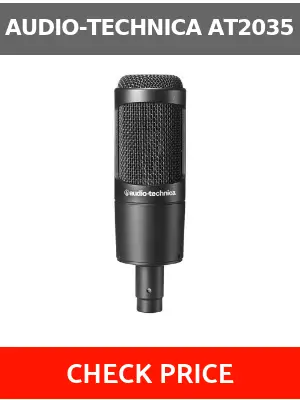
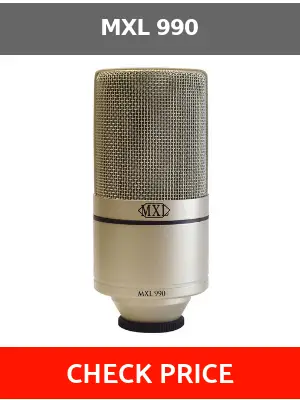
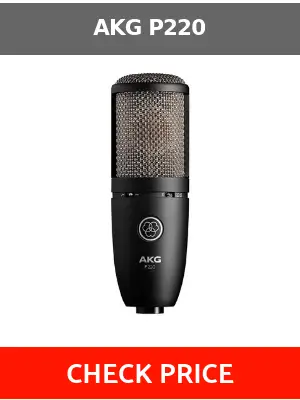
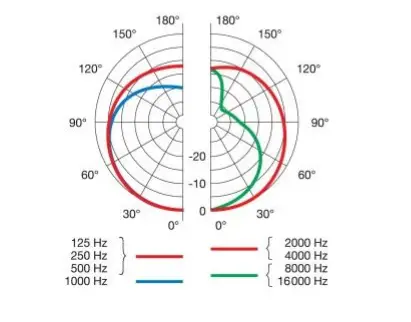
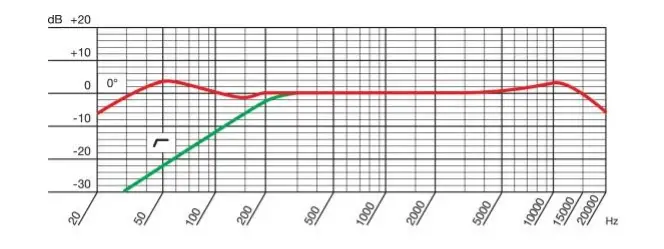

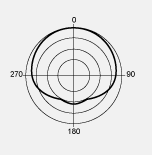
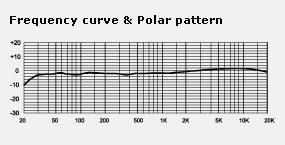
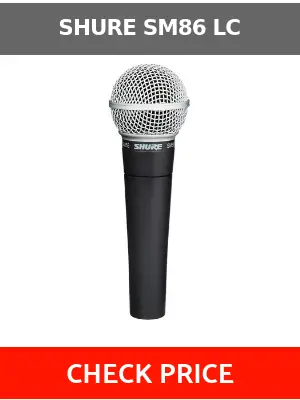
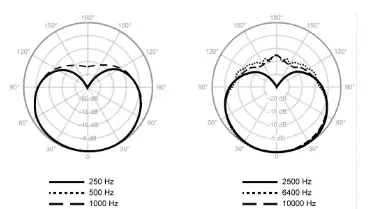
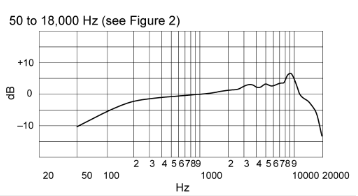
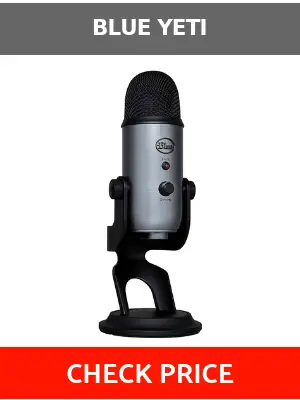

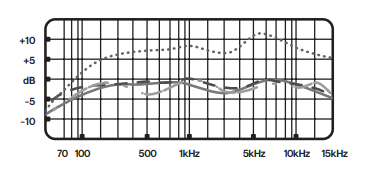
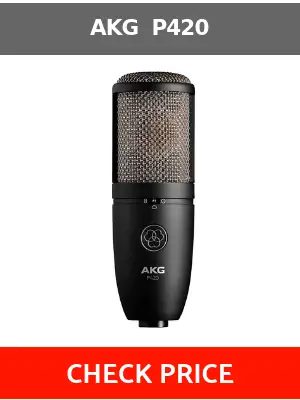
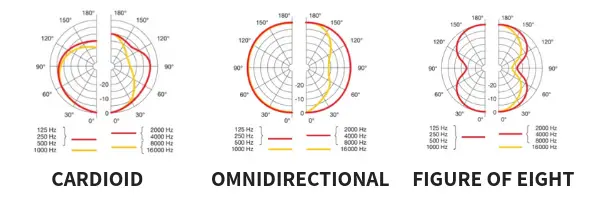
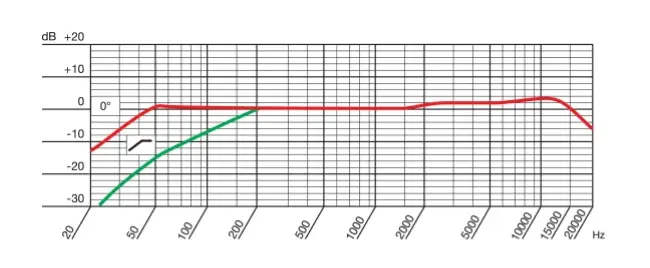
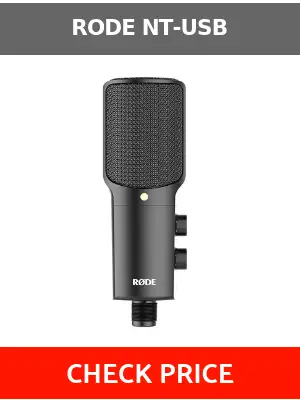
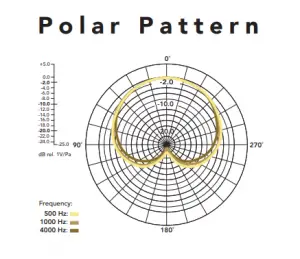
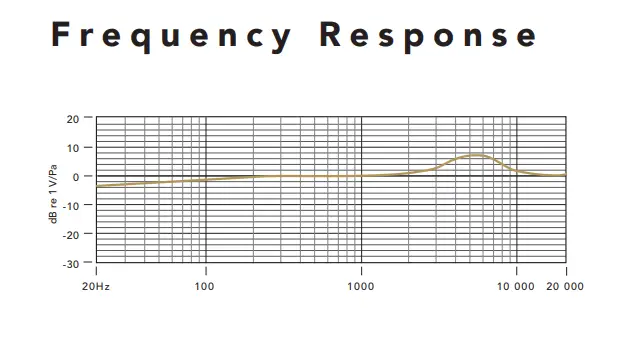
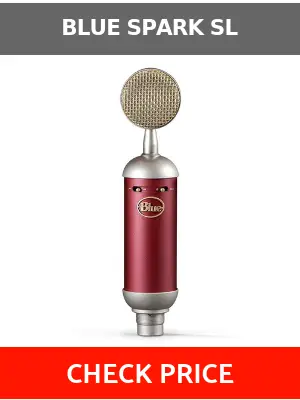
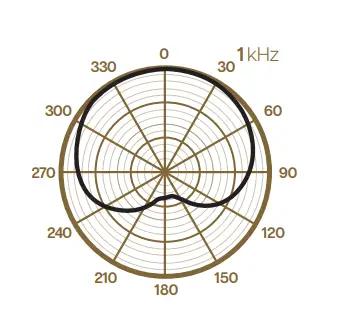
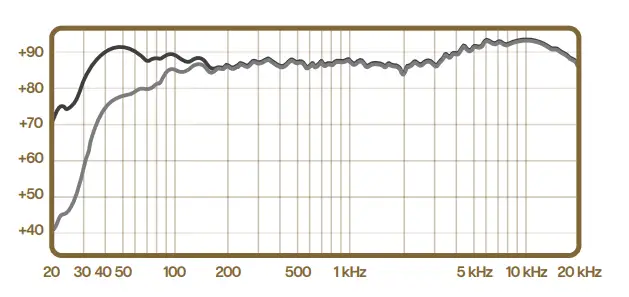
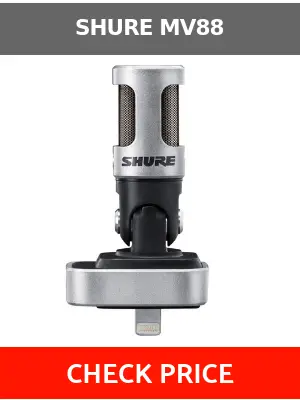
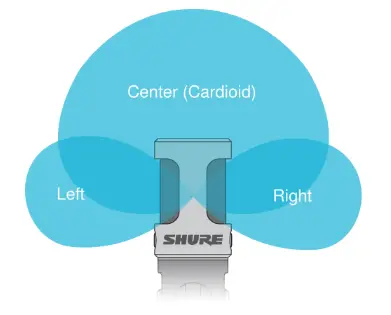
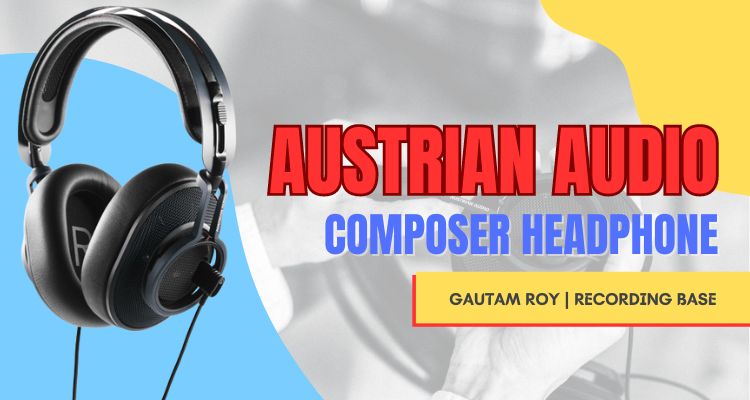
![Heritage Audio i73 PRO Series Audio Interfaces Review [2024]](https://www.recordingbase.com/wp-content/uploads/2024/01/Heritage-Audio-i73-pro-series.jpg)

